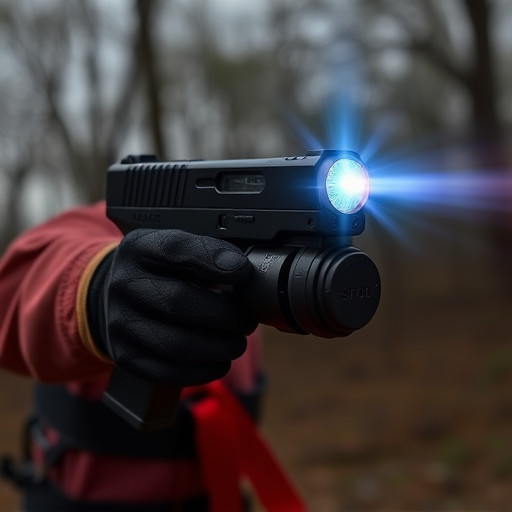Stun guns (tactical electronic control devices) temporarily disable targets through high-voltage, low-current electrical pulses that disrupt neuromuscular function, lasting 5-15 seconds. Effectiveness and duration vary based on device model, target's physicals, and electrical current. They immobilize assailants for self-defense or law enforcement purposes, with typical incapacitation times ranging from several seconds to a couple of minutes. Safe use requires understanding local laws and proper storage practices to minimize risk.
Stun guns, also known as electronic control devices (ECDs), are designed to temporarily incapacitate individuals using electric shocks. Understanding how they work is crucial to comprehending their effectiveness. This article delves into the duration of stun gun effects and explores factors that can influence them. We’ll also discuss safety and legal considerations following their use, providing a comprehensive guide for those seeking to protect themselves with these devices. What do stun guns do and for how long can they render a person temporarily defenseless?
Understanding Stun Guns: How They Work
Stun guns, also known as tactical electronic control devices (ECDs), are non-lethal weapons designed to temporarily incapacitate a target through electrical disruption of their neuromuscular system. When activated, stun guns emit a high-voltage, low-current electric pulse that interferes with the body’s electrical signals, causing muscles to contract involuntarily and leading to loss of balance, disorientation, and temporary paralysis. This abrupt interruption in normal muscle function allows users to control and subdue an aggressor without causing permanent harm.
The effectiveness of a stun gun depends on various factors, including the device’s voltage output, the duration of the pulse, and the target’s physical condition and clothing. While the primary goal is to render the target temporarily non-threatening, the effects typically last for a short period, ranging from 5 to 15 seconds on average. This brief incapacitation provides users with enough time to escape, summon help, or apply other defensive measures, making stun guns valuable tools for self-defense and law enforcement operations alike.
Duration of Stun Gun Effects
The duration of a stun gun’s effects can vary greatly depending on several factors, including the model of the device, the amount of electrical current delivered, and the target’s physical attributes. Stun guns, or electroshock weapons, temporarily disable an individual by delivering an electric shock that disrupts the normal functioning of their muscular system. This disruption causes muscle spasms, disorientation, and a loss of balance, rendering the target immobile for a short period.
On average, the effects of a stun gun can last from 2 to 15 minutes, with some advanced models claiming even longer durations. However, it’s crucial to remember that these periods are not precise and can be influenced by external factors. For instance, larger or more muscular individuals may require higher voltage settings to achieve the same level of incapacitation as someone smaller in stature, thus extending the duration for the latter but not necessarily changing the overall impact on the former.
Factors Influencing Stun Duration
The duration of a stun gun’s effects can vary significantly based on several factors, including the weapon’s design and power output, as well as the target’s physical attributes and reaction. Stun guns, also known for what they do as electric pulse devices, use an electrical current to disrupt muscles’ ability to contract, effectively rendering the target temporarily immobilized. The impact lasts for a period ranging from several seconds to up to several minutes.
Factors like the stun gun’s voltage, pulse width, and frequency play a crucial role in determining the stun duration. More powerful devices with longer pulse durations tend to have greater effects. Additionally, the target’s body mass, muscle density, and nerve sensitivity can influence how long the stun lasts. Larger individuals or those with higher muscle mass may require more significant electrical impulses to achieve the same level of incapacitation as someone smaller in size.
Safety and Legal Considerations After Stun Gun Use
After the activation of a stun gun, its effects are designed to disrupt an assailant’s muscular control and sensory perception, rendering them temporarily incapacitated. This disruption is achieved through high-voltage, low-current electrical impulses that interfere with nerve signals in the body. However, understanding the duration of these effects is crucial for both safety and legal reasons. The length of stun gun impact can vary significantly based on factors such as the device’s power output, the target area, and the individual’s physical resilience. Typically, the effects may last from several seconds to a couple of minutes, during which time the targeted person should be kept under observation.
It’s essential to remember that while stun guns are powerful tools for self-defense, they do not cause permanent damage or harm when used correctly. Nevertheless, users must be aware of local laws and regulations regarding stun gun ownership and usage, as these vary widely between jurisdictions. Safety precautions should also be taken seriously, including ensuring the device is properly maintained and stored, and understanding the range and intensity of its effects to minimize risks for both the user and bystanders.
